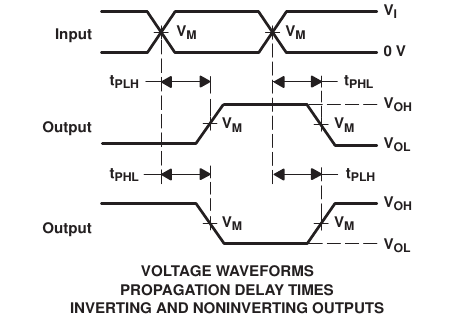Hi, what controls the length of the pulse delay for the 74VLC1g123? And how large is the jitter?
Note that the datasheet only gives tables for the range of the delay. I am looking for something more specific. If for example, the delay varies with load, temperature, power supply, etc, then we need some representation of how much it varies with each (c.f. d t_{pd} /d C_L, d t_{pd}/dT, and d t_{pd}/d V_s etc around some nominal operating condition, c.f., 3pF, 3.3V, 25C).
To make it more clear what is being asked, here is a diagram from the datasheet. Notice the times indicated on the leading edge of the output, t_{PHL} and t_{PLH}. As it says in the footnote, these are the pulse delay times; the time from the leading edge of the input pulse to the leading edge of the output pulse. Again, this question is not about the pulse length, it is about the pulse delay.



